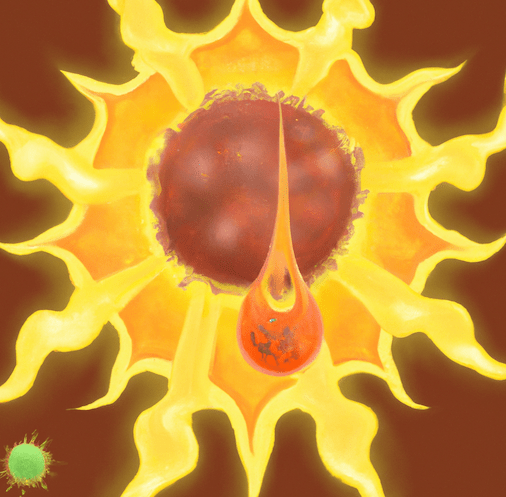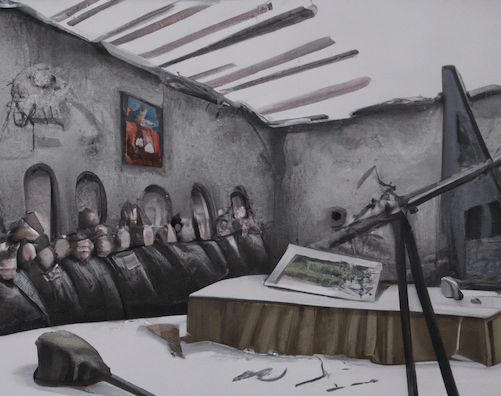The sun is the center of our solar system, providing light and heat to all the planets that orbit around it. But could there be a life form that is specifically designed to survive in such harsh conditions? While this idea may seem far-fetched, there are a few scientific concepts that suggest that a sun-living organism may be possible.
Possibility of a Sun-Living Life Form

Firstly, let’s look at the conditions on the sun’s surface. The temperature on the sun’s surface is estimated to be around 5,500 degrees Celsius, which is hot enough to vaporize any known material. The sun also emits intense radiation, which can damage or kill any living organism. Despite these challenges, there are a few factors that suggest that a sun-living organism may be possible.
One concept is that a sun-living organism could be made of a material that is capable of surviving in such extreme conditions. For example, some scientists have proposed that a silicon-based life form could potentially survive on the sun. Silicon is abundant in the universe and has a high melting point, making it a potential candidate for a sun-living organism.
Another possibility is that a sun-living organism could have developed ways to protect itself from the sun’s intense heat and radiation. For example, it could have a highly reflective surface that would reflect the sun’s radiation, or it could have a protective shield that would absorb the radiation and convert it into a more manageable form.
In addition to these physical adaptations, a sun-living organism could also have developed biological adaptations that allow it to survive in such extreme conditions. For example, it could have a highly efficient cooling system that would prevent overheating, or it could have a mechanism for repairing damaged cells caused by the sun’s radiation.
While these concepts may seem far-fetched, it’s important to keep in mind that life on Earth has evolved to survive in a wide range of conditions, from the depths of the ocean to the top of the highest mountains. So, it’s not beyond the realm of possibility that a life form could exist that is capable of surviving on the sun.
While a sun-living organism may seem like a science fiction concept, there are a few scientific concepts that suggest that it could be possible. Whether it actually exists or not is still unknown, but the possibility is intriguing and deserving of further study.
Life Form Literature
- Solaris by Stanislaw Lem: This science fiction novel is set on a distant planet covered entirely by a vast ocean. The ocean is home to a complex organism, which is studied by a team of scientists who gradually become obsessed with its strange behavior.
- The Sun Also Rises by Ernest Hemingway: Although this novel doesn’t focus on sun-living life forms in the literal sense, it does explore the concept of people living their lives under the constant, unyielding presence of the sun.
- Dune by Frank Herbert: This epic science fiction novel is set on a desert planet where the inhabitants have adapted to a harsh environment dominated by the sun. The novel features many creatures that are adapted to life in a sun-scorched desert.
- The Martian Chronicles by Ray Bradbury: This collection of short stories explores the colonization of Mars by humans, and includes several stories about the strange and often hostile life forms that the colonists encounter.
- Dragonriders of Pern by Anne McCaffrey: This series of science fiction novels features a planet where the inhabitants ride genetically engineered dragons to protect themselves from a dangerous sun-induced phenomenon known as Thread.
- The War of the Worlds by H.G. Wells: This classic science fiction novel features an invasion of Earth by Martians who have adapted to the harsh conditions of their home planet, which includes a much stronger and more intense sun.
- The Andromeda Strain by Michael Crichton: This novel focuses on a group of scientists who are trying to contain a deadly virus that has been brought back to Earth from a space mission. The virus is found to be highly resistant to the effects of the sun’s radiation.
- The City and the Stars by Arthur C. Clarke: This science fiction novel is set billions of years in the future, when the Earth has become a lifeless wasteland. The remaining humans live in a vast city called Diaspar, which is shielded from the harsh sun by a massive force field.
Keywords: sun-living organism, extreme conditions, silicon-based life form, intense heat, intense radiation, reflective surface, protective shield, cooling system, repairing damaged cells, life form, sun life form, life form on sun
Check out our Novel Writing Workbooks
Check out Little Tree Food Forest for articles on food forests and homesteading.
Check out FoodieScapes for articles on growing, fermenting and preserving food.
Subscribe to our newsletter to get information delivered to your inbox on how to write a book, outlining your novel, keeping journals, marketing your novel, self-publishing, writing poetry and more.










